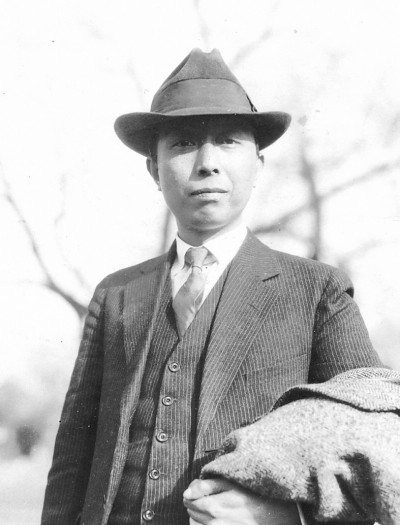|
Gangtai
Gangtai () are the C-pop artists and musical style from Hong Kong or Taiwan. The term is synonymous with post-1960 Cantopop or post-1970 Mandopop, a sweet, love type melody found distinctly in C-pop and not any other genre of Chinese folk, rock or traditional music.Garofalo, Reebee. 992(1992). Rockin' the Boat: mass music and mass movements. South End Press. See also * Shidaiqu Shidaiqu () is a type of Chinese popular music that is a fusion of Chinese folk, American jazz and Hollywood film music that originated in Shanghai in the 1920s.Shoesmith, Brian. Rossiter, Ned. 004(2004). Refashioning Pop Music in Asia: Cos ... References Chinese styles of music Cantopop C-pop Culture of Hong Kong Culture of Taiwan {{China-music-stub ... [...More Info...] [...Related Items...] OR: [Wikipedia] [Google] [Baidu] |
Mandopop
Mandopop or Mandapop refers to Mandarin popular music. The genre has its origin in the jazz-influenced popular music of 1930s Shanghai known as Shidaiqu; later influences came from Japanese enka, Hong Kong's Cantopop, Taiwan's Hokkien pop, and in particular the campus folk song folk movement of the 1970s. "Mandopop" may be used as a general term to describe popular songs performed in Mandarin. Though Mandopop predates Cantopop, the English term was coined around 1980 after " Cantopop" became a popular term for describing popular songs in Cantonese. "Mandopop" was used to describe Mandarin-language popular songs of that time, some of which were versions of Cantopop songs sung by the same singers with different lyrics to suit the different rhyme and tonal patterns of Mandarin. Mandopop is categorized as a subgenre of commercial Chinese-language music within C-pop. Popular music sung in Mandarin was the first variety of popular music in Chinese to establish itself as a v ... [...More Info...] [...Related Items...] OR: [Wikipedia] [Google] [Baidu] |
C-pop
C-pop is an abbreviation for Chinese popular music (), a loosely defined musical genre by artists originating from mainland China, Hong Kong and Taiwan (the Greater China region). This also includes countries where Sinitic languages, Chinese languages are used by parts of the population, such as Singapore and Malaysia. C-pop is used as an umbrella term covering not only Chinese pop but also rhythm and blues, R&B, Sentimental ballad, ballads, Chinese rock, Chinese hip hop and Chinese ambient music, although Chinese rock diverged during the early 1990s. There are currently three main subgenres within C-pop: Cantopop, Mandopop and Hokkien pop. The gap between Cantopop and Mandopop has been narrowing in the new millennium. Hokkien pop, initially strongly influenced by Japanese enka, has been re-integrating into C-pop and narrowing its trend of development towards Mandopop. Chinese popular music in China was initially a vehicle for the Cultural Revolution and Maoism, Maoist ideolo ... [...More Info...] [...Related Items...] OR: [Wikipedia] [Google] [Baidu] |
Hong Kong
Hong Kong)., Legally Hong Kong, China in international treaties and organizations. is a special administrative region of China. With 7.5 million residents in a territory, Hong Kong is the fourth most densely populated region in the world. Hong Kong was established as a colony of the British Empire after the Qing dynasty ceded Hong Kong Island in 1841–1842 as a consequence of losing the First Opium War. The colony expanded to the Kowloon Peninsula in 1860 and was further extended when the United Kingdom obtained a 99-year lease of the New Territories in 1898. Hong Kong was occupied by Japan from 1941 to 1945 during World War II. The territory was handed over from the United Kingdom to China in 1997. Hong Kong maintains separate governing and economic systems from that of mainland China under the principle of one country, two systems. Originally a sparsely populated area of farming and fishing villages,. the territory is now one of the world's most signific ... [...More Info...] [...Related Items...] OR: [Wikipedia] [Google] [Baidu] |
Taiwan
Taiwan, officially the Republic of China (ROC), is a country in East Asia. The main geography of Taiwan, island of Taiwan, also known as ''Formosa'', lies between the East China Sea, East and South China Seas in the northwestern Pacific Ocean, with the China, People's Republic of China (PRC) to the northwest, Japan to the northeast, and the Philippines to the south. It has an area of , with mountain ranges dominating the eastern two-thirds and plains in the western third, where its Urbanization by country, highly urbanized population is concentrated. The combined Free area of the Republic of China, territories under ROC control consist of list of islands of Taiwan, 168 islands in total covering . The Taipei–Keelung metropolitan area, largest metropolitan area is formed by Taipei (the capital), New Taipei City, and Keelung. With around 23.9 million inhabitants, Taiwan is among the List of countries and dependencies by population density, most densely populated countries. Tai ... [...More Info...] [...Related Items...] OR: [Wikipedia] [Google] [Baidu] |
Cantopop
Cantopop (a contraction of "Cantonese pop music") is a genre of pop music sung in Cantonese. Cantopop is also used to refer to the cultural context of its production and consumption. The genre began in the 1970s and became associated with Hong Kong popular music from the middle of the decade. Cantopop then reached its height of popularity in the 1980s and 1990s before slowly declining in the 2000s and shrinking in the 2010s. The term "Cantopop" itself was coined in 1978 after "Cantorock", a term first used in 1974. In the 1980s, Cantopop reached its highest glory with fanbase and concerts all over the world, especially in Macau, Mainland China, Taiwan, Singapore, Malaysia, South Korea, and Japan. This was even more obvious with the influx of songs from Hong Kong movies during the time. Besides Western pop music, Cantopop is also influenced by other international genres, including jazz, rock and roll, R&B, disco, electronic, ballad and others. Cantopop songs are almost inva ... [...More Info...] [...Related Items...] OR: [Wikipedia] [Google] [Baidu] |
Shidaiqu
Shidaiqu () is a type of Chinese popular music that is a fusion of Chinese folk, American jazz and Hollywood film music that originated in Shanghai in the 1920s.Shoesmith, Brian. Rossiter, Ned. 004(2004). Refashioning Pop Music in Asia: Cosmopolitan flows, political tempos and aesthetic Industries. Routeledge Publishing. Terminology The term literally translates to 'songs of the era' in Mandarin Chinese. When sung in Cantonese, it is commonly referred to as ; in Amoy Hokkien, it is known as . These terms incorporate the native names for the dialects. The term is believed to have originated in Hong Kong to describe a genre of popular Chinese music that gained prominence in Shanghai during the early to mid-20th century. This genre emerged as a fusion of traditional Chinese melodies, Western musical elements, and influences from jazz and popular music of the time. Musicality Shidaiqu is a kind of fusion music that makes use of jazz musical instruments (castanets, maracas ... [...More Info...] [...Related Items...] OR: [Wikipedia] [Google] [Baidu] |
Chinese Styles Of Music
Chinese may refer to: * Something related to China * Chinese people, people identified with China, through nationality, citizenship, and/or ethnicity **Han Chinese, East Asian ethnic group native to China. **''Zhonghua minzu'', the supra-ethnic concept of the Chinese nation ** List of ethnic groups in China, people of various ethnicities in contemporary China ** Ethnic minorities in China, people of non-Han Chinese ethnicities in modern China ** Ethnic groups in Chinese history, people of various ethnicities in historical China ** Nationals of the People's Republic of China ** Nationals of the Republic of China ** Overseas Chinese, Chinese people residing outside the territories of mainland China, Hong Kong, Macau, and Taiwan * Sinitic languages, the major branch of the Sino-Tibetan language family ** Chinese language, a group of related languages spoken predominantly in China, sharing a written script (Chinese characters in traditional and simplified forms) *** Standard Chines ... [...More Info...] [...Related Items...] OR: [Wikipedia] [Google] [Baidu] |
Culture Of Hong Kong
The culture of Hong Kong is primarily a mix of Chinese culture, Chinese and Western culture, Western influences, stemming from Lingnan Cantonese roots and Hong Kong's status as a British Hong Kong, British colony from 1841 to 1997 (Jyutping: ; Traditional Chinese: 粵英薈萃). As an international financial center dubbed "Asia's World City", contemporary Hong Kong has also absorbed many international influences from around the world. Moreover, Hong Kong also has Indigenous inhabitants of the New Territories (Hong Kong), indigenous people and ethnic minority, ethnic minorities from South Asia, South and Southeast Asia, whose cultures all play integral parts in modern-day Hong Kong culture. As a result, after the 1997 Transfer of sovereignty over Hong Kong, transfer of sovereignty to the People's Republic of China, Hong Kong has continued to develop a unique identity under the rubric of One Country Two Systems, One Country, Two Systems.Lilley, Rozanna. [1998] (1998) Staging Hong ... [...More Info...] [...Related Items...] OR: [Wikipedia] [Google] [Baidu] |




